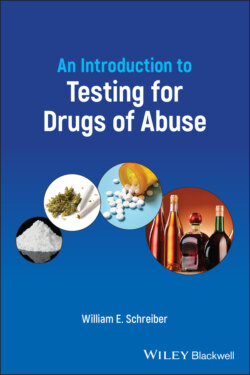Читать книгу An Introduction to Testing for Drugs of Abuse - William E. Schreiber - Страница 36
How Cheaters Try to Beat Drug Tests
ОглавлениеCollection of urine samples is not usually witnessed. The person providing the sample may try to get a “clean” test result by tampering with the specimen before submitting it. Specimen tampering can be divided into three categories.
Adulteration – a substance is added to the specimen that masks the presence of drugs and their metabolites. The substance may interfere with the analytical method or it may react with the drug(s) of interest to produce compounds that are not detected. Bleach, vinegar, ammonia, and other household products have been used for this purpose. More sophisticated operators use additives that interfere with drug tests but are hard to detect. These adulterants include nitrite, chromate, peroxide, halogens (all of which are oxidizing agents), and glutaraldehyde. Commercial products with amusing names like Whizzies, UrineLuck, and Stealth are available on the internet and in drug paraphernalia shops.
Substitution – the patient substitutes another sample for their own urine. It could be a friend's urine, a synthetic urine product, a yellow‐colored fluid such as apple juice, or tap water. Since the sample does not come from the patient, it will test negative (unless they pick the wrong person to provide the substitute sample!).
Dilution – the goal of this strategy is to dilute drugs in urine below the threshold for a positive result. This can be accomplished in several ways: (i) drinking an excess of fluids prior to collection, (ii) taking diuretics to flush drugs out of the urinary tract, and (iii) adding water or another liquid to the sample itself.
